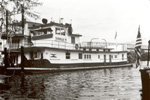St. John Central Academy
1857 establishments in Ohio2019 disestablishments in Ohio2019 establishments in OhioCatholic secondary schools in OhioDefunct Catholic secondary schools in Ohio ... and 3 more
Educational institutions disestablished in 2019Educational institutions established in 1857High schools in Belmont County, Ohio
St. John Central Academy is a private christian school in Bellaire, Ohio. Their nickname is the Fighting Irish, and their athletic teams compete as members of the Ohio Valley Athletic Conference. From 1857 to 2019, a St. John Central High School operated as part of the Roman Catholic Diocese of Steubenville. The diocese announced on February 5, 2019 that the school would close in June 2019. However, a private committee established St. John Central Academy in the same building, opening the fall after the former school closed. The new academy inherited the history of St. John Central, including its athletic teams, but is considered a new entity with no affiliation to the diocese.
Excerpt from the Wikipedia article St. John Central Academy (License: CC BY-SA 3.0, Authors).St. John Central Academy
Oak Alley,
Geographical coordinates (GPS) Address Nearby Places Show on map
Geographical coordinates (GPS)
| Latitude | Longitude |
|---|---|
| N 40.019166666667 ° | E -80.743055555556 ° |
Address
Oak Alley 3645
43906
Ohio, United States
Open on Google Maps







